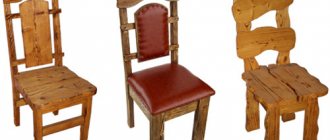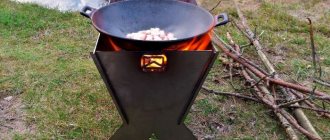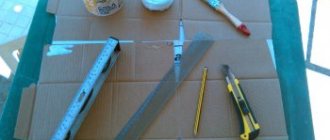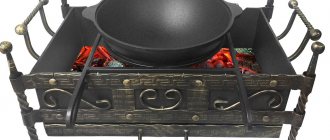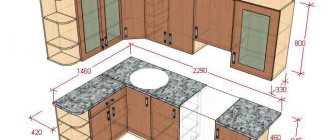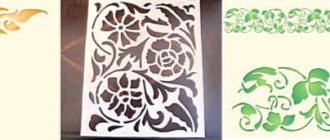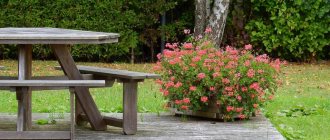The oven is completely insulated from hot gases and soot. Can be used both at the beginning of the furnace firing and at the end of the combustion process. And the temperature inside it can be regulated using valves that meter the flow of hot gases into the space surrounding the oven. Thanks to this, it is easier to cook in it, and dishes can be more varied than when cooking dishes directly inside the firebox, as is done in tandoors or the same Russian oven.
What is this article about?
Which oven to choose
Practice provides a choice of three oven oven options:
- Made of cast iron (with thick walls and a massive door;
- Made from thin-walled steel sheet;
- A shellless oven chamber in which the only metal element is the door.
What are the advantages of this or that design?
Cast iron oven
The most expensive and at the same time the most functional type of oven.
Regardless of the location: above the firebox, in the place where hot gases pass through the opening of the chimney, such an oven will heat up evenly due to its high thermal conductivity, and remain operational for a long time after the furnace has finished firing due to the high heat capacity of cast iron.
Thin-walled oven
It can be designed in such a way that it will be surrounded by hot gases from all sides. In this case, the oven warms up and is ready to use quickly. Literally a few minutes after the fuel started burning.
The downside is the very high temperature inside the oven and the low heat capacity of a thin steel sheet. Shortly after the end of combustion, the temperature inside the oven decreases and becomes insufficient for baking bread.
Uneven heating of the oven walls is another drawback of a thin-walled design.
This can be avoided by structures in which a thin-walled steel casing is lined with brick on all sides. The gaps between the oven and the brickwork are minimized or completely absent.
The flow of hot gases does not act on the metal box, but on the outer surface of the bricks with which it is lined.
This design has a high heat capacity, less risk of metal burning, and more uniform heat distribution inside the oven container.
Oven without shell
Essentially, this is an enlarged version of the “stove” - a niche in the body of the Russian stove, which served as an increase in heat transfer and at the same time served as a place for preparing thermostatic dishes - Varents, curdled milk, and a drying rack for clothes and shoes.
The shellless niche must be recessed deep enough into the furnace to ensure good heating of the walls during the combustion process.
The walls of the half-brick niche allow you to quickly warm up the internal cavity, and the high heat capacity of the brick allows you to maintain a high temperature inside the oven for a long time.
Such a shellless oven takes much longer to warm up than its metal counterparts, but it also takes as long to cool down as the oven itself.
An undeniable advantage of a shellless oven is the breathability of the walls. A particularly important quality when baking bread. The brick “under” of the oven prevents burning, and the fat that flows down during the cooking of meat dishes does not burn, but is absorbed into the brick. Gradually it burns out on the outer surface of the brick. A kind of “self-cleaning” of the oven occurs.
Video description
For a clear overview of laying and applying mortar, watch the video:
- Duplicate row, but the stones are laid flat.
- The brick is on edge, the walls are wiped with a wet rag.
- The brick is laid flat, and on the back side - on the edge.
- Next, the firebox is closed, 2 bricks should hang over the chamber (if the structure is planned to be used as a fireplace and the firebox is not covered), the flame will be directed to the middle of the structure.
- The stones are moved a little to the back side, they will support the door. Before laying the brick, wet strips of asbestos are laid to seal it. The panel cannot be placed on the mortar - cracks will appear due to the difference in thermal expansion.
- A pipe is formed to remove smoke. A smooth expansion is made towards the back. Stone is used for the base; light metal is used for everything else.
- A valve is installed, it is necessarily sealed with asbestos, first coated with a solution. This completes the construction of the structure.
Decorated stove for cooking and heating Source mainavi.ru
At the end, several tiers of the chimney are made, and a pipe is inserted into it. The brick (installed without mortar) and all debris are removed. The joint of the structure near the floor is closed for decoration with metal. The structure will dry completely after 1-2 weeks.
How to build a simpler type of oven if you don’t have the time, necessary materials or skills? Take advantage of the following structure, which can be erected in just a few hours. It has the simplest operating principle.
Fuel is placed below, which burns there, and where it settles. The draft is created by temperature changes. This design is characterized by a minimal amount of smoke and almost complete combustion of fuel. For this option, two half stones and 20 whole bricks are enough. There are five rows in the stove, the stones are tied together with mortar, but you can lay out the stove without using it - it will be a temporary structure.
Oven installation rules
If an oven made of metal, especially thin-walled metal, is installed in the oven, the oven should be designed in such a way as to isolate the bottom surface from the flow of hot gases as much as possible. This is achieved by laying a layer of brick. The larger the volume of the combustion chamber, the thicker the brick layer should be. If the oven is not located above the combustion chamber, but in the lumen of the chimney or in the channel of the air duct system, then a metal divider is installed under the bottom that diverts the flow of gases to the side surfaces of the oven. This helps prevent the bottom from overheating and food burning.
The lowest-heated part of any oven oven is the top surface. Gases flowing around the oven create vortices above it. The oven top is not getting hot enough. Therefore, it is necessary to install a “stove tooth” in the chimney duct - a structure similar to a fireplace, which reflects hot gases to the top of the oven.
During installation, special attention is paid to the oven dampers, which regulate the supply of gases that heat the oven. They greatly facilitate cooking at any stage of the furnace fire.
Much attention is paid to the junction of the metal oven body and the brickwork. The gap between them should allow the heated metal to expand freely. Otherwise, pressure on the brick lining will lead to rapid destruction of the furnace. This is achieved with elastic layers of asbestos. At the same time, asbestos acts as a heat insulator. It somewhat reduces the speed of heating the oven, but, on the other hand, it reduces the speed of its cooling.
The shellless oven, which is one with the “body” of the oven, does not have all these shortcomings. It heats up and cools down evenly along with the oven. The only inconvenience is the warm-up time before reaching operating temperature.
The process of installing the oven itself is simple. The most difficult thing is to ensure uniform flow of furnace gases so that the container is heated evenly.
This article contains clear, very detailed photo instructions for laying a brick stove with your own hands, tips on how not to make mistakes when choosing the necessary materials and how to correctly place the stove in a private house for optimal heating of a larger area.
Pros and cons of the design in a pencil case
Pencil cases have a number of conveniences: when preparing food, you don’t need to bend over, it’s easier to monitor the cooking process. Such headsets are useful for owners with back problems. Of course, their scope of application is much wider than just a place to locate an oven. You can install a multicooker, toaster or other kitchen devices there.
Since ovens are located at heights, it is important that the fastening is strong, because injuries can occur if the structure collapses.
Options for installing a stove in the house
The placement of the stove depends entirely on what exactly the owners expect from it. If it is installed in a small house and will be used as a fireplace for friendly gatherings, you can use the first scheme. This stove is a good option for cooking barbecue on the grill or kebabs.
Brick kiln placement options
The second scheme is for a house of solid square footage. In this case, the front side of the fireplace stove opens into the living room, the stove walls heat both bedrooms, and the heat in the remaining rooms is maintained using heat exchange.
Installation features
The cast iron oven is a large box with a door. It is immersed in a niche that is pre-made in the oven. After installing the cabinet in the opening, the space is filled with refractory bricks, and a heat insulator is placed in the gap area - asbestos cords or plates. The oven is lined with ceramic bricks, having previously placed it on edge. The upper part of the device is coated with clay, a layer of 5-6 cm .
The main feature is that there is no load on the furnace, so a supporting part of the structure is preliminarily provided. For this purpose, there is a brick “castle”, which completely eliminates the load on cast iron parts. Such a system is called vault access. If there is no brick “lock”, then a strong steel plate is installed in the upper part. A cast iron oven for a brick oven has the property of expanding during heating. Because of this, destruction of the brickwork is possible. That is why a small space is left between the side walls and the cabinet, into which a shock absorber - a heat-insulating material - is placed. It smooths out fluctuations in volume.
Selection of bricks, sand, mortar
In order for the stove to serve for a long time, you need to select all the materials correctly. There are three types of bricks:
- Ceramic - can be used to build a stove.
- Silicate ones are generally not suitable in this case, even double M150.
- Fireproof - ideal, but they are often used only for fireboxes and fireplaces, varieties: fireclay, refractory bricks, etc.
Advice: when choosing a brick for a stove, you need to completely abandon the hollow types.
The solution is made from clay. Red clay is suitable if the stove is made of red brick; when using fireclay, special fireclay clay is required. Some stove makers still make their own mortar in the old fashioned way from river sand with a grain size of 1–1.5 mm, clay (in a ratio of 2.5:1) and water. It is advisable to use angular quarry sand without foreign inclusions and the so-called fatty clay. However, it is easier and more reliable to buy a ready-made baking mixture in the store, preparing it according to the instructions.
From the accessories you need to purchase grates, blower and combustion doors, soot cleaners, valves or dampers.
Preparation, list of tools
Before starting work, you need to determine and mark the place that the new stove will occupy.
The chimney pipe should be no closer than 15 cm from the roof rafters.
If you are doing masonry for the first time, professional stove makers advise you to practice in advance by making a model of the future stove from prepared bricks. Naturally, without a solution. This minimizes possible risks during real masonry, allowing you to learn from your mistakes, which can still be corrected in the layout.
The stove foundation requires preliminary waterproofing; its area must exceed the area of the stove.
When laying a new row, you need to control the absolute verticality of the walls.
To build a brick kiln, the following tools are needed:
- plumb line;
- trowel;
- roulette;
- putty knife;
- Bulgarian;
- knitting wire;
- building level;
- metal strips, corners;
- containers for cement and clay mortar.
Spark extinguishing
Any tent has a hole for a hot smoke pipe (chimney). In addition, the area around the stove is always protected with a fireproof mat in case of hot coals flying out. Some tent manufacturers recommend rolling back the tent base and placing the product directly on the ground.
Not only hot carbon dioxide, but also sparks rise from the stove through the chimney pipe. If the pipe is short, they can get onto the roof of the tent and cause a fire. To prevent this from happening, the chimney pipe is made long so that it is at least 2–2.5 m long. While the spark flies along this path, it will have time to go out. Consequently, the chimney acts as a spark arrestor.
Safety precautions also mean that all objects that can catch fire should be kept away from the operating stove. Another danger is carbon monoxide. It must go strictly into the chimney. And the tent itself should be designed so that clean air regularly enters it.
Step-by-step instructions with photos for laying a stove
Different stove makers have their own masonry technologies and their own secrets that come with years of experience. Here is information about a fairly simple way to create a stove-fireplace for heating a two-story house; the process will not seem extremely difficult even to novice stove makers.
Foundation laying
The base course of brickwork will serve as the foundation. It is done with any brick; some stove makers even fill this level with crushed stone.
When laying the base row, cement mortar is used.
The foundation is completely filled with mortar, the layer is leveled.
Construction of the furnace body
The first row of stoves is marked. The horizontal line from which they start when marking is the wall of the room.
A grate is placed where the fireplace is planned to be placed. From this row, the bricks are already laid on the kiln mortar.
An important stage of work is the scrupulous alignment of each new row by level.
Laying the second row. The stove wall, located closest to the wall of the room, is reinforced with additional bricks to increase fire safety.
The place where the chimney will be located in the 2nd row remains empty, the rest of the stove is laid completely. A door is installed through which the owners will clean out the ash.
The door is installed on the solution and leveled. For a more reliable fixation, it is secured with wire, which must be laid between the bricks.
Next, the next 3 rows are placed. Then a brick stop for the grate is installed - 2 rows of 1/4 bricks are placed on the sides.
The grate is laid not on a simple brick, but on a refractory brick. To ensure that it lies at the same level as the bricks, holes are cut in the fireclay bricks.
The size of the brick can be easily adjusted - the excess is measured and carefully cut off.
The large door is mounted next to the installed grille.
The large oven door is similarly secured using wire fasteners.
The first row of fireboxes is placed exactly above the fireplace, it is reinforced with metal corners and a strip or thick tin. So that the masonry can lie on them, it is cut using a grinder, then the slots are adjusted manually to the desired size.
The next brick row is laid.
A fireplace grate is laid on the fire-resistant brick along with the brick row.
The door is fixed, the brick is strictly adjusted to it.
The firebox of the new stove and fireplace is ready.
Fire-resistant fireclay bricks are placed above the stove firebox.
The stove body is built.
Creating a chimney
The space left for the chimney is divided into wells. The design requires reinforcement with metal plates.
Brick chimney wells are laid.
Soot cleaners are mounted above the firebox roof.
The wells are divided again, the first rows of walls should be reinforced with strips of metal.
After strengthening, the ceiling of the furnace body is erected. The space associated with the chimney remains empty.
The body cornice is laid out, then the chimneys are laid.
The final stage of work on the first floor. The stove is located at the bottom left, the smoke inside the chimneys moves in a spiral and comes out at the top left. The final separation of the wells is covered with a tin sheet. In order to compensate for the pressure inside the fireplace stove, 2 brick rows are laid on the tin.
There are two chimneys stretching to the second floor of the house - from the fireplace and the stove itself, they are separated from each other. Each chimney requires the installation of a separate damper.
Floor level of the second floor. Waterproofing is installed here, the chimney is again reinforced with metal corners. To save money and avoid building a heating stove on the second floor, the chimney of the stove under construction is again divided. The smoke will snake through it, managing to warm up the room. In order for the chimney to warm up much faster, it is laid in the area of the second floor with a thickness of 1/4 or 1/2 brick.
A hole for the stove chimney is carefully cut out in the roof.
Before placing the chimney on the roof, it is reinforced with metal corners.
If the chimney is located in close proximity to the roof ridge, it must be laid out at least 0.5 meters above the ridge. If further, then the height of the chimney is allowed equal to the height of the ridge, but not lower. In this case, the wind increases the stove draft, lifting the smoke upward.
Preparatory work
To make furniture, it is advisable to have a workshop. You can use a large table in a free room. Make sure there is an outlet within walking distance to connect power tools and stock up on an extension cord. Organize your workplace lighting correctly.
If you are going to make a closet in a non-residential area, then take care of heating in winter and forced ventilation in hot summer. Large window openings will save energy consumption during the daytime. A workbench equipped with stops, sockets, vices and clamps will be a good help for assembling the cabinet.
What should it be
It would seem that there is nothing easier than replacing the suitable surface of a brick oven with a metal insert with your own hands, getting a stove for cooking. In reality, everything is much more complicated. A stove is a complex device, and the thermophysical processes occurring in it depend on the correct arrangement of its elements.
There are special requirements for furnaces of this type. On the one hand, it must effectively accumulate heat in the thickness of the brickwork, on the other hand, it must take a significant part of the heat to heat the hob . In the summer, when heating the house is not required, the hob should warm up quickly with economical fuel consumption.
Requirements
Theoretically, the hob can be made from any material that can heat up to high temperatures when the stove is fired. In practice, they use cast iron plates with holes covered with a removable lid.
This design allows you to create zones with different temperatures on the stove. The thermal conductivity of cast iron, unlike steel, is not very high, so you can heat food on the plane of the stove, as well as cook or stew it over low heat. And by opening the lid, you can achieve direct heating of the cookware with an open flame, which allows you to quickly boil water or fry food in a frying pan.
The most practical are the burners shown in the photo, consisting of concentric rings of different diameters - they can be adjusted to the size of the bottom of the cookware. In addition, the gaps between the rings compensate for the thermal expansion of cast iron that occurs when overheated, and the plate can withstand multiple heating and cooling cycles without damage. Solid cast iron stoves are less reliable and require more careful firing.
Materials
Which brick is preferable for laying a stove equipped with a hob? In most cases, on the ordering diagrams of stoves for a home, cottage or bathhouse, you can see two types of bricks: regular solid ceramic and fire-resistant fireclay - it is most often indicated in yellow. From fireclay bricks, they lay out with their own hands those parts that experience the greatest thermal loads during combustion : the firebox and the roof of the furnace, part of the smoke channel directly after the combustion chamber.
The main difference between fireclay bricks is its increased heat capacity . It is able to accumulate and release the resulting heat for a long time more efficiently than ceramic. For laying a heating stove, and especially a sauna stove, this is an undeniable plus.
But if the stove is used primarily as a cooking stove, then the increased heat capacity of fireclay is rather a disadvantage: it will absorb a significant part of the heat, and cooking will take more time. In the summer it will be impossible to cook on such a stove - the room will become hot and stuffy.
If the stove is used primarily for cooking, it is recommended to use a minimum amount of fireclay bricks!
There are many varieties of heating and cooking stoves; every stove maker probably has in stock several tested drawings and diagrams, according to which he carries out the masonry with his own hands. But, one way or another, they are all built on the basis of long-known ones, which are discussed below.
Swedish oven
The “Swedish” was originally intended to perform several functions : heating, cooking a variety of foods, as well as drying and keeping clothes warm. Its design is thought out in detail; the stove is equipped with a hob, an oven, and perfectly heated stove niches. In addition, its smoke channels are designed in such a way that the body of the stove is heated evenly from bottom to top , due to which a stable temperature is maintained in the room.
A distinctive feature of the Swedish stove shown in the photo is the oven. And its function is not limited to baking and baking. The oven is located next to the firebox and is separated from it by a thin layer of masonry. The firebox arch is formed by a slab located in a niche. Immediately after starting the fire, the cooking surface and the wall between the firebox and the oven warm up well.
In winter, when the stove is fully loaded, the initial heating of the room occurs by convection currents from the stove and oven, and after the end of the fire, due to the heated walls of the stove. The hob does not overheat , since air constantly circulates above it.
In summer, the stove is used mainly for cooking . In this case, intense convection does not occur, since there is no temperature difference, and a small amount of fuel is sufficient for good heating of the stove. The oven also warms up, creating a high-temperature zone at the exit from the firebox, due to which the flue gases go into the channels completely burnt. The furnace body heats up slightly .
The diagram and drawings of the masonry of a Swedish-type stove with your own hands are shown in the figure.
To lay a classic “Swedish” with your own hands you need:
- red solid brick grade M 150 - 580 pieces;
- clay-based dry masonry mixture - 200 kg;
- cast iron grate;
- firebox door;
- ash door;
- cast iron stove with two collapsible burners;
- oven welded from sheet metal;
- chimney damper - 2 pcs;
- cleaning - 3 pieces;
- equal-flange steel angle 40 mm - 170 cm;
- steel strip 5x50 mm - 65 cm;
- flat slate 10 mm thick - 1 sheet;
- roofing iron.
The foundation for the swedish is made solid, from concrete .
Under the foundation it is necessary to make a sand and gravel cushion 15-20 cm thick. The height of the foundation itself is at least 30 cm, with two-layer reinforcement made of rods. Before laying begins, the foundation is kept for at least 20 days to gain strength. Level the foundation using a screed with the floor level. After it dries, it is necessary to thermally insulate the furnace from the concrete, otherwise it will absorb a significant part of the heat.
Videos and drawings of a waste oil furnace with a water circuit
How to properly operate furnaces during mining, how to maintain them
The following operating rules must be adhered to.
A do-it-yourself furnace is a simple device to use. It will provide warmth to a small room and allow you to cook food. But do not forget about safety precautions and that all responsibility lies with you.
For safety reasons, give preference to closed varieties. They are not prone to releasing toxins into the atmosphere. Suitable if ventilation is not possible. Install two fire extinguishers. One near the stove to quickly eliminate the fire. The second one should be placed near the entrance. To be sure, you need to install them in opposite directions with easy access. This will help you get out of the room if you are cut off by fire. Carbon dioxide fire extinguishers have better atomization and coverage area. Foam, water and powder cannot be used. They are not effective and can lead to big problems like poisoning.
Source

